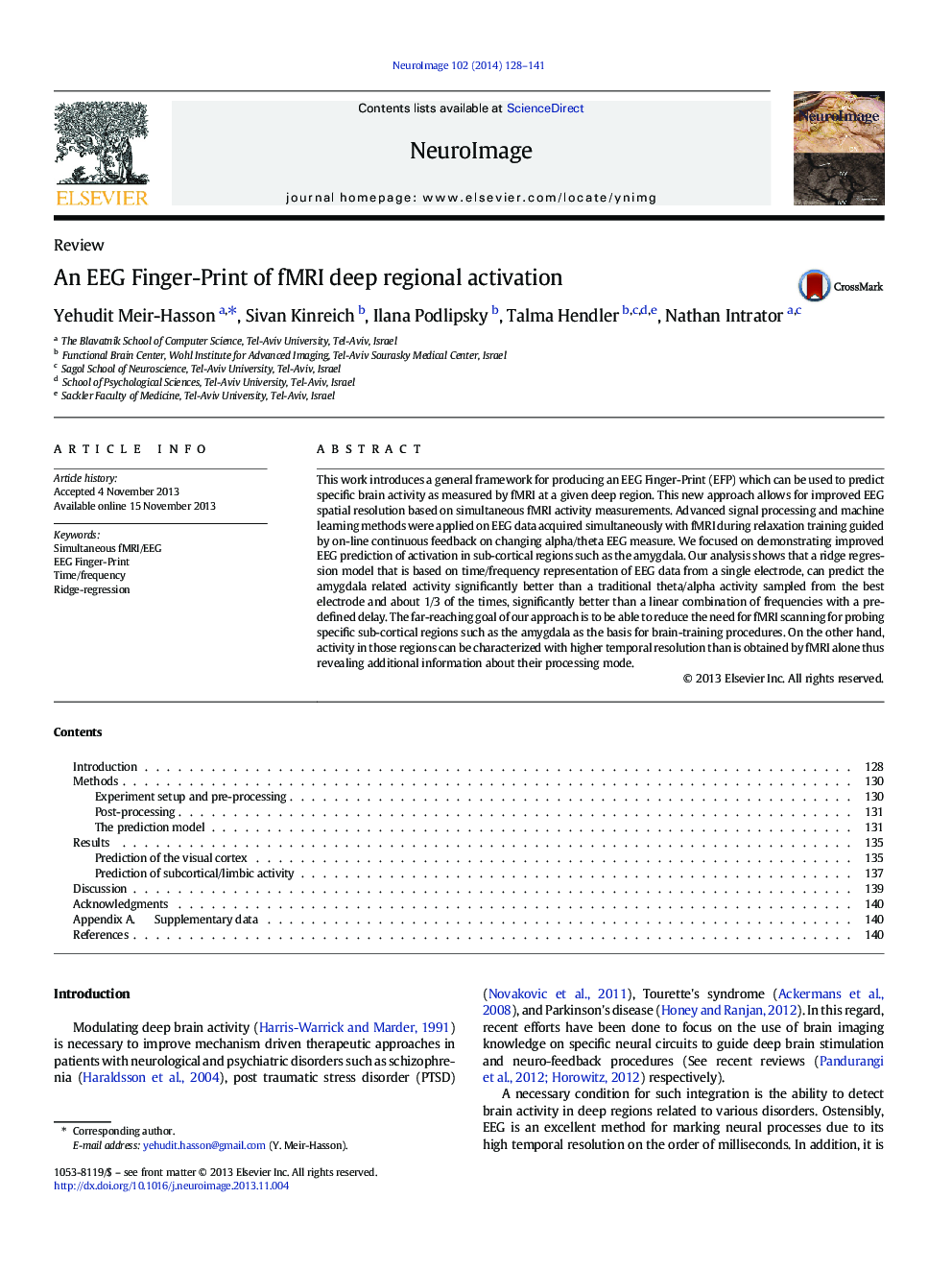| Article ID | Journal | Published Year | Pages | File Type |
|---|---|---|---|---|
| 6026237 | NeuroImage | 2014 | 14 Pages |
â¢We use simultaneous EEG/fMRI to produce an EEG Finger-Print (EFP).â¢The EFP can be used to predict the BOLD activity at a given sub-cortical region.â¢We use T/F representation of the EEG data where each frequency has its own delay.â¢We show improved prediction of the amygdala during real-time relaxation training.â¢The EFP may reduce the need for fMRI for probing specific sub-cortical regions.
This work introduces a general framework for producing an EEG Finger-Print (EFP) which can be used to predict specific brain activity as measured by fMRI at a given deep region. This new approach allows for improved EEG spatial resolution based on simultaneous fMRI activity measurements. Advanced signal processing and machine learning methods were applied on EEG data acquired simultaneously with fMRI during relaxation training guided by on-line continuous feedback on changing alpha/theta EEG measure. We focused on demonstrating improved EEG prediction of activation in sub-cortical regions such as the amygdala. Our analysis shows that a ridge regression model that is based on time/frequency representation of EEG data from a single electrode, can predict the amygdala related activity significantly better than a traditional theta/alpha activity sampled from the best electrode and about 1/3 of the times, significantly better than a linear combination of frequencies with a pre-defined delay. The far-reaching goal of our approach is to be able to reduce the need for fMRI scanning for probing specific sub-cortical regions such as the amygdala as the basis for brain-training procedures. On the other hand, activity in those regions can be characterized with higher temporal resolution than is obtained by fMRI alone thus revealing additional information about their processing mode.
